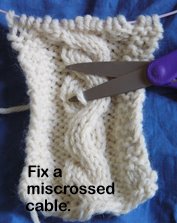.
Inside the Field Museum. Here is Sue -- the largest and most complete Tyrannosaurus rex skeleton ever found (so far). The skeleton was found by someone named Sue, which is why it's called Sue.
I'm just guessing that the Chicago Blackhawks (hockey team) are big supporters of the museum. Also in this main hall is a pteranodon wearing a Blackhawks scarf.
Can't you just hear her, reading to the tyke from her book? Imagine a very upper class British accent, and a slow and deliberate delivery: "And the rules of hockey shall be as follows."
I wandered into one of the older parts of the museum. This is a glass model of the skeleton of an umbrella squid. Imagining the job of the artist/scientist whose job it was to make glass models of squid skeletons.....
Speaking of squid skeletons....
Endoskeletons I knew about (inside the body, like ours). Exoskeletons I knew about (outside the body, like lobsters or crickets). Hydrostatic skeletons were news to me.
There is a LOT of amazing taxidermy in the Field Museum. While I am not down with slaughtering herds of animals to stuff them for the amazement of the marks (or even for eddification of ... anyone), I can admire the skill of the person or persons who did this work.
Nothing looked clunky, nothing looked unbelievable. Family groups, in a state of heightened attention, in dramatic poses. All exquisitely done. Pretty darned amazing.
Not easy to photograph. In addition to the usual glare-on-the-glass-case problem, they are in low light (as lots of light is very hard on organic materials, over time).
Look at this next group. I've never seen any critters like these (Perhaps they are all dead, in museums? I hope not!). Tall and skinny, and apparently they stick their long skinny tails straight up when they are alarmed (note upright black tail on the individual closest to us).
What a fine set of horns this guy had.
There was a scent of mothballs in the taxidermy section. (Which went on and on and on. Giraffes. A rhino. It's amazing. Definitely somewhat sickening. But amazingly artistically done.)
Here's someone we didn't kill. Yay.
This is asilisaurous. According to Wikipedia, "Asilisaurus (/ɑːˌsiːliːˈsɔrəs/ a-SEE-lee-SAWR-əs; from Swahili, asili ("ancestor" or "foundation"), and Greek, σαυρος (sauros, "lizard") is an extinct genus of silesaurid archosaur. It is one of the oldest known animals on the dinosaur/pterosaur side of the archosaurian tree (the Avemetatarsalia), dating to about 245 million years ago.[1]"
I think it's cool that they used Swahili in its name, as it is Tanzanian in origin. This was about 6' long, nose to tail tip.
There was a bunch of information about what it was like to go and dig in Tanzania. There are a bunch of the actual fossil bones they found (all of the ones they found, maybe?), in addition to the skeleton model above. The ones below are from a forelimb.
Wandering on. This is the jawbone of a sperm whale. It was large. It is on a raised surface (not sure how high off the floor, but not more than a foot, I think), and the lowest teeth were at my eye level. !!!
There are a number of things I find curious about this. So narrow. What can its tongue be like, to fit in that very narrow space?
The teeth are so dull. Not sharp. Aren't sperm whale teeth sharp? Well, yes, I just went and looked. They are. So I wonder why these are not. From an older individual, so worn down? I wonder......
For another thing -- the jaw is not joined in front, the way ours is. I wonder if that is common for whales. I guess it is -- again, I went and looked.
So cool, that we can look at things in museums or wherever, generate questions, and come up with the answers so easily............
Up high in the Field Museum. Looking east at the Aquarium.
And even further east, at the Planetarium.
Looking north at Chicago and the harbor.
This is a great vantage point! Lots of things we've seen before are in this image, including the walkway along the lake.
Wandering on.
Oh my. It's our great-great-great-great-one-hundred-twenty-eight-thousand-greats grandma. (She's from 3.2 million years ago, and if a generation is about 25 years? I bet that's on the high side, for an estimate of time between generations, and the actual number of greats is closer to 200,000........) Wow.
I've seen photographs of this sort of reconstruction of what Lucy might have looked like, but I found it to be something else entirely to see this life-size sculpture of her, up close and personal.
She was so little. She looks worried.
I wanted to tell her "It's ok, Grandmother. Your children, and theirs, will survive, and thrive.........."
Wow.
In addition to the realistic sculpture of Lucy that was safely within a glass case, they had bronze models of her hand and head that were ok to touch.
Such long fingers, on her little hand.
I wonder how much of Lucy's DNA runs through our veins. We know a lot more about how much of this guy's DNA we have.
All of us whose ancestors left Africa more than 20 or so thousand years ago have Neanderthal DNA. At least 2-3%.
Something
I heard fairly recently is that we don't all have the same bits of
Neanderthal DNA, and that if you added up what all of us have, about 30%
of the Neanderthal genome is represented.
Pretty amazing, right?
I found this to be pretty amazing, too. Her 11-13,000-yr-old skeleton was found in France in the early years of the 20th century.
This reconstruction was made in the same way Lucy's reconstruction was made. Hair by hair, freckle by freckle.
This looks totally realistic. It's almost creepy that she's buried in ... whatever that surface is made of.
I've seen realistic sculpture before, but this goes above and beyond other pieces I've seen.
What an amazing job, making things like this! Helping us see how someone who has been dead and gone for 12,000 years -- or 3.2 million years! -- might have looked, when she was alive................
An amazing job to make the head-dress, too.
Wow.
.
Subscribe to:
Post Comments (Atom)





































No comments:
Post a Comment